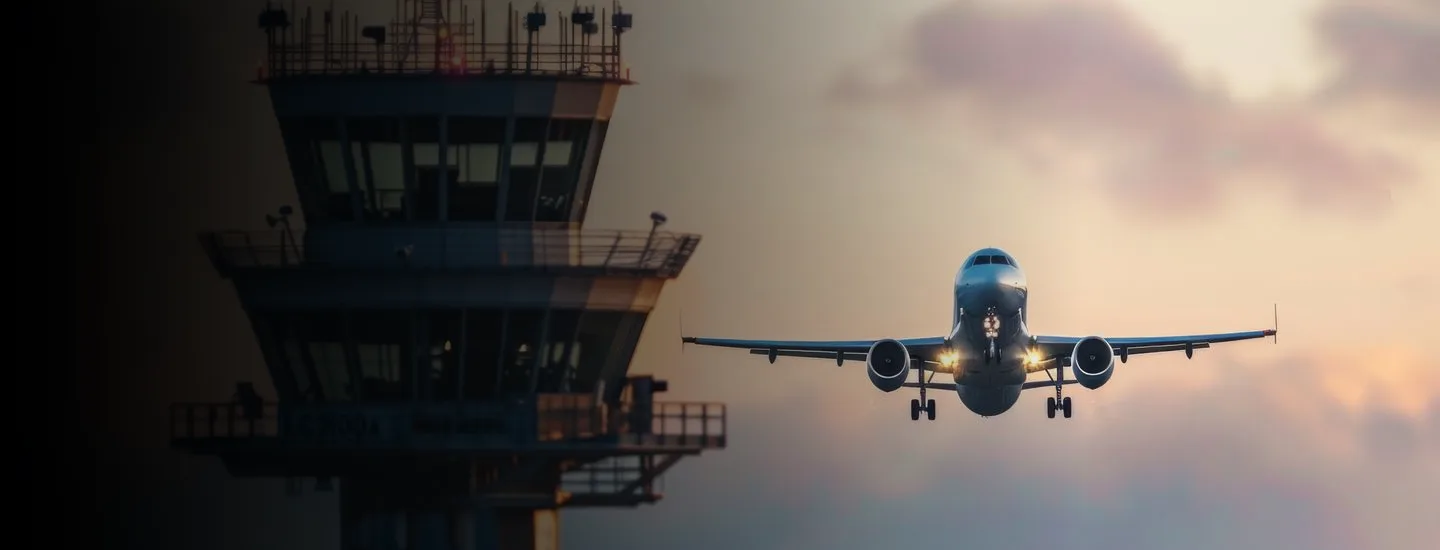How close is your supply chain to a breaking point?
Supply chain disruptions have cost the aerospace and defense industry tens of billions of dollars in recent years. After navigating pressures such as inflation and workforce shortages, the industry now faces new headwinds like tariffs and trade restrictions for critical materials and components while managing the immediate challenge of ramping up production.
The consequences are visible, as OEMs have warned airlines to expect further delivery delays while they stabilize their supply chain performance and work through persistent issues.
As instability continues, companies must ask themselves: How well do we really know our suppliers? How can we better anticipate and fix earlier potential issues within our supply chain? And how many of our critical programs are at risk because of hidden issues in the supply base?
With major commercial programs ramping up and new programs emerging in the defense sector, OEMs and upper-tier suppliers that fail to secure and strengthen their supply base risk falling behind. In contrast, those that take a proactive stance—by enhancing visibility, managing risks early, and progressively redesigning their supply chain—will be positioned to lead the industry in the next decades and preserve their profitability.
Geopolitics are reshaping the supply chain imperative
Beyond inflation and production demands, geopolitical pressures are now driving a new urgency in rethinking how supply chains are structured and monitored. The push to build more agile supply chains is intensifying – especially across Europe, where sovereign autonomy has become a strategic priority.
However, these goals are impossible to meet without full visibility across multiple supplier tiers. It is no longer enough to understand your Tier-1 suppliers’ location or capabilities. You need to trace the country of origin of parts embedded deep within sub-assemblies. A supplier may appear regionally compliant yet still rely on Chinese or U.S.-controlled inputs several layers down.
The evolving trade war between the U.S. and China, combined with rising tariffs and sovereignty initiatives pushing for supply chain regionalization, makes this kind of insight a strategic necessity. Companies that cannot identify and address hidden dependencies in their multi-tier supply base will face growing compliance risks, sourcing disruptions, and potential exclusion from future platform programs due to a lack of performance.
Sovereignty and country of origin issues only add to ongoing challenges with supplier delivery, cost, and quality performance. These issues are intensifying as both commercial and defense sectors ramp up significantly. Simply put, supply chains these days are incredibly complex, with multiple layers that can span across many regions with varying degrees of issues that need to be well understood and continuously monitored.
The supply chain watchtower: Your first step toward proactive risk management
The concept of a supply chain watchtower has gained significant traction over the past decade, driven by the rise of data integration solutions capable of overcoming fragmented and legacy data systems. Today, it is a must-have capability for high-performing organizations, serving as a real-time command center that enables anticipation as well as strategic and tactical decision-making, action execution, and tracking across the supply chain.
Why supply chains are failing: three core drivers
- Skills shortage: Many suppliers lost critical expertise during the pandemic and are struggling to rebuild capabilities and train a new and less experienced workforce. This has led to persistent underperformance, forcing supply chain teams into constant firefighting mode, damaging morale, increasing turnover, and further deepening talent attrition.
- Lack of visibility and anticipation: Siloed organizations, green reporting culture, and fragmented data systems make it difficult to uncover root causes and detect risks before they arise. Critical data is often spread across disconnected systems and functions, forcing teams to manually stitch together dashboards that are already outdated by the time they’re ready. Metrics are normalized and aggregated across entities, but users often don’t recognize or trust the outputs, fueling debates over data accuracy, misaligned views, delayed decisions, and inaction at the very moment speed and clarity are most needed.
- Limited cross-functional alignment: The absence of program-level performance and cost targets hinders the formation of cross-functional teams, limiting coordination across program management, supply chain, and engineering.
How the watchtower changes the game
- Anticipate risk, optimize resource allocation: The system continuously monitors a variety of risk indicators defined and calibrated collaboratively and leverages predictive analytics to flag early signs of deterioration before disruptions occur. Data visualization and a proactive approach enable smarter resource allocation, help minimize bottlenecks, prevent part shortages, and maintain supply chain continuity.
- Drill down to what matters: Supply chain and program managers gain immediate, program-specific visibility into supplier vulnerabilities. This targeted view accelerates decision-making and enables fast identification of root causes—whether related to delivery performance, delay in recovery, quality issues, capacity limitations, or financial instability—empowering teams to take data-driven, early, and effective actions.
- Foster cross-functional collaboration and accountability: The platform eliminates silos between supply chain, program management, engineering, and quality by enabling real-time, transparent coordination. Automated action logs track overdue, upcoming, and completed tasks, while built-in notifications ensure clear ownership and timely follow-through.



So, in essence, the watchtower provides the critical first step in tackling supply chain issues. True impact follows when that visibility is paired with the ability to deploy multi-functional expert teams, resolve issues at the source, and drive recovery.
Implementation in practice
For a global aerostructure business, a beta version of the supply chain watchtower – covering over 1,000 suppliers – was deployed in just 10 weeks, including the establishment of a physical war room with required multi-functional governance. Typical implementation ranges from 8 to 12 weeks, depending on supply chain complexity, required customization, data source readiness, and the degree of resistance to change.
Unlike traditional tools that demand significant infrastructure changes or lengthy onboarding, the watchtower is built for rapid deployment and seamless integration into a client’s IT applications landscape, enabling fast adoption with minimal disruption to day-to-day operations. The supply chain watchtower is one brick of a larger construct, helping in detecting and anticipating risks and issues. AlixPartners supports its clients on other critical bricks such as enabling clients to diagnose root causes, defining recovery plans with suppliers, potentially intervening with the right teams, and fixing issues.
Two years after launch, the tool remains embedded in daily use across the supply chain and the broader organization. The CEO described it as a “game-changer” for its ability to centralize supplier insights and drive coordinated risk mitigation across teams.
We recommend starting with a beta version to quickly generate value and validate core use cases before deciding whether to scale. For organizations ready to go further, the watchtower can evolve into a fully integrated digital supply chain ecosystem, including a supply chain digital twin capable of forecasting and automating planning from raw materials through to assembly and test. This advanced capability can be delivered through our strategic partnership with Palantir, bringing together cutting-edge AI technology and deep operational expertise, as well as tools already existing within our client applications landscape.
The future of supply chain: Are you ready?
Your supply chain is only as strong as its weakest – and often hidden – link. Supply chain issues don’t just impact delivery dates; they trigger a ripple effect that undermines program margins, erodes customer trust, and weakens your competitive position.
With major platform programs across commercial, defense, and space set to define the next era of aerospace and defense, suppliers will increasingly be judged not only on performance and cost, but also on transparency, traceability, and geopolitical risk exposure. Down-selections for the next-gen programs may begin as early as 2028. That means the window to stabilize your supply base, map critical dependencies, and demonstrate operational and strategic resilience is closing fast.
Click here to explore the demo and see how the watchtower can give you visibility and empower your teams to uncover risks earlier, act faster, and deliver with confidence.
For a deeper discussion around the challenges and solutions in this area, contact:
Eric Bernardini
Executive Partner & Managing Director, Aerospace, Defense, and Airlines
[email protected]
Stefan Ohl
Global Co-Leader, Aerospace, Defense, and Airlines
[email protected]
David Wireman
Global Co-Leader, Aerospace, Defense, and Airlines
[email protected]
Etienne Muselier
Partner & Managing Director, Americas Leader, Aerospace, Defense, and Airlines
[email protected]
Contact the authors:
Luc Esmerit
Partner
[email protected]
James Heyden
Director
[email protected]





